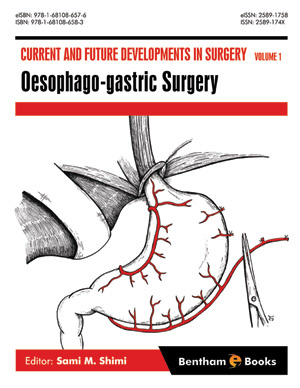Abstract
Barrett’s oesophagus (BE) is a metaplastic change of the oesophageal mucosa from squamous to columnar mucosa (with intestinal metaplasia). The condition is recognized endoscopically as pink salmon extensions in the lower oesophagus. It is an acquired condition arising as a result of chronic gastro-oesophageal reflux disease (GERD) and is regarded as a premalignant condition of the oesophagus leading to oesophageal adenocarcinoma. Patients typically present with symptomatic GERD, but the condition also occurs in asymptomatic individuals. The diagnosis of BE is made endoscopically and confirmed histologically. BE is a common problem with prevalence rates ranging from 5% to 15% in the general population. The condition is associated with an increased risk of oesophageal adenocarcinoma (OAC), approximately 0.5% per patient per year. This translates to an estimated lifetime risk of cancer development of 5-8%. There is growing acceptance of the metaplasia, dysplasia, adenocarcinoma sequence in the development of adenocarcinoma of the oesophagus. A small but significant proportion of patients with Barrett’s metaplasia will develop dysplastic change. Those who progress from low-grade dysplasia (LGD) to high-grade dysplasia (HGD), have a 10% annual risk of developing adenocarcinoma and the 5-year survival for these patients is of the order of 12%. Treatment is dependent upon the degree of dysplasia, and for cancer, the depth of invasion and the presence of lymphovascular invasion. Endoscopic surveillance is warranted for those with low-grade dysplasia (LGD), followed by endoscopic mucosal resection and ablative therapy in those with HGD limited to the mucosa. Surgical resection is reserved for those with established submucosal disease and a high likelihood of lymphovascular invasion.
Keywords: Barrett’s oesophagus, Metaplasia, Dysplasia, Oesophageal adenocarcinoma, Surveillance, Endoscopic resection, Radio-frequency ablation, Chemoprevention, Prague classification, Paris Classification, Vienna classification, Seattle biopsy protocol, Guidelines.






















